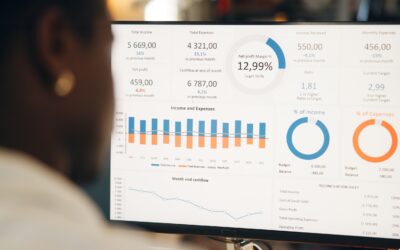Your first-time donor just gave. That’s the moment of highest excitement—and highest risk. Because if you don’t follow up quickly and thoughtfully, that initial spark fades into silence.
The secret to turning one-time donors into lifelong supporters isn’t a single thank-you email. It’s a strategic donor onboarding sequence: a series of intentional, automated touchpoints that nurture trust, tell your story, and invite continued engagement.
At Solafund, we’ve built this process right into the platform. You don’t need to juggle Mailchimp, Salesforce, or third-party integrations. Everything you need—from automated emails to segmentation and tracking—lives in one dashboard.
Why Onboarding Is the Missing Link in Donor Retention
Every nonprofit obsesses over acquisition: how to get more people to give. But retention is where real growth happens. Studies consistently show that keeping even 10% more donors can double your long-term fundraising outcomes.
The first 30 days after a donation are critical. Donors want to feel seen, valued, and confident their gift made a difference. Yet most organizations stop after the receipt and a generic thank-you. That’s not onboarding—that’s abandonment.
To retain donors, you need a system that builds relationship, not just acknowledgment.
The Anatomy of a Great Donor Onboarding Sequence
Your onboarding flow should be personal, predictable, and purposeful. Each message should answer one key question the donor is subconsciously asking:
- “Did you receive my gift?” → Confirmation and gratitude.
- “Was it worth it?” → Proof of impact.
- “Do you remember me?” → Personalized connection.
- “What’s next?” → A clear next step or invitation.
Let’s walk through a sample five-step sequence that works beautifully for most organizations—especially when powered through Solafund’s built-in automations.
Step 1: Instant Gratitude
The first message should arrive within seconds. It’s not about design flair—it’s about speed and sincerity.
Start with a simple subject line: *Thank you for helping [specific outcome].*
In the email body, confirm the gift amount, acknowledge its purpose, and include a warm message from your organization’s leader. Don’t overload with links. The goal is emotional connection, not another ask.
This moment sets expectations for your communication tone. Keep it human, not corporate.
Step 2: The Impact Snapshot
Within 2–3 days, follow up with a brief impact story. Show the donor what their contribution made possible.
This doesn’t have to be elaborate. One photo, one short paragraph, and one quote from a beneficiary or team member go further than long-form reports.
When donors see tangible proof early, it validates their trust. You can see this principle echoed in Donor Loyalty and Impact Reports, where timely follow-ups are shown to strengthen emotional connection and repeat giving.
Step 3: The Personal Connection
Around one week later, send a short email from a team member—ideally someone who interacts with donors.
Thank them again and share something specific about their contribution type (for instance, “your support helped fund student scholarships this month”).
You can even ask a simple question like, “What inspired your gift?” Replies can automatically tag contacts within Solafund, creating dynamic audience segments for future campaigns.
No external CRM required. No API integrations. It’s all built in.
Step 4: The Mission Deep Dive
Two weeks in, give donors context. This is your chance to expand their understanding of your organization without overwhelming them.
Share a short story about your founding vision or a recent project win. Include a behind-the-scenes photo or short video clip. Then, invite them to explore more.
For example, link to your most relevant evergreen resource, like How to Build Donor Trust in the Digital Age. It’s a natural bridge between transparency, engagement, and credibility.
This stage helps donors see themselves as partners in your mission—not just participants in a transaction.
Step 5: The Second Ask (Done Right)
After about 30 days, you’ve earned the right to make another ask—but do it wisely. Don’t jump straight to another donation button. Instead, invite a smaller action first: join your email list, follow your updates, or sign up for recurring giving.
Explain that consistent support makes long-term impact possible. Keep the ask optional but visible.
If your donor has already engaged in multiple touchpoints, Solafund’s automation rules can move them to a new sequence—perhaps a monthly giving or event-invitation workflow. That’s how onboarding transitions seamlessly into retention.
Automation Without the Tech Headaches
The problem with traditional donor onboarding is fragmentation. One tool manages donations, another sends emails, and another stores contact data. Each system needs its own setup, integration, and maintenance.
Solafund eliminates that chaos. Our platform automates onboarding natively within your giving dashboard. Each donor action can trigger personalized communication instantly—without a single Zapier link or external API.
For example:
- A donor gives → automatic thank-you email fires within seconds.
- They click your story link → they’re tagged as “mission-engaged.”
- They make a second gift → they move to your “repeat donor” sequence.
It’s intuitive, integrated, and built to help you spend less time on tech and more time on relationships.
What Makes Great Donor Communication Feel Effortless
Automation doesn’t mean impersonal. The best sequences feel handwritten, even when they’re system-driven. To achieve that balance, keep these principles in mind:
- Write like a person: If it wouldn’t sound right in a one-on-one conversation, it won’t feel right in email either.
- Use segmentation: Solafund’s built-in CRM lets you target by gift size, campaign, or donor history. Personalization increases open rates dramatically.
- Measure behavior, not assumptions: Review your analytics regularly to see which messages earn clicks or replies. Then refine accordingly.
Remember, onboarding isn’t a one-size-fits-all process. It’s an evolving dialogue between your organization and your supporters.
Timing Is Everything
The timing between messages can make or break engagement. Too frequent, and you overwhelm donors. Too slow, and they forget why they cared.
Here’s a proven cadence to start with:
- Day 0: Gift confirmation + heartfelt thanks
- Day 2: Impact snapshot
- Day 7: Personal connection
- Day 14: Mission deep dive
- Day 30: Second ask or recurring invitation
From there, extend the sequence quarterly with updates, surveys, or behind-the-scenes stories. (See The Power of Donor Surveys for ideas on gathering feedback without fatigue.)
Beyond Email: Layering Touchpoints
While email remains the backbone of donor onboarding, it shouldn’t stand alone. Pair it with other digital touchpoints:
- Social media shoutouts for major gifts
- Text message updates for real-time events
- Handwritten or video thank-yous for high-value donors
Each layer adds warmth and memory to the donor experience. When people feel remembered, they remember you.
Turning Onboarding Into Retention
The end goal isn’t just a polished sequence—it’s long-term donor retention. Your onboarding flow should evolve naturally into ongoing engagement.
Here’s the good news: when all your data, communication, and giving records live in one platform, that transition happens automatically.
Solafund keeps every interaction connected. You’ll know who opened your email, who gave again, and who needs a nudge—all without toggling between tools.
That kind of visibility lets small teams operate like large ones, and large teams operate like leaders.
Final Thought
Donor onboarding isn’t about sending more emails—it’s about building confidence. The moment someone gives is the moment they decide whether they’ll give again.
A thoughtful, automated sequence turns that moment into momentum. And when your platform makes it simple to manage everything in one place, consistency becomes second nature.
Your mission deserves that kind of clarity. Your donors do, too.




0 Comments